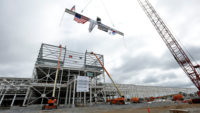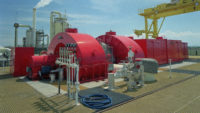Two reports released by the U.S. Nuclear Regulatory Commission Inspector General's office contend that most, if not all, U.S. nuclear power plants contain counterfeit, fraudulent and suspect components. The agency's watchdog arm proposes changes to add oversight to existing plants and future facility projects.
The IG reports state that the fraudulent parts can be more prone to failure, resulting in potential safety issues.
The probes point to unauthorized copies of actual components, potentially made with an intent to deceive, although one analysis recommends that NRC more clearly define the term. The fraudulent components have been found in hard-to-spot plant areas such in valves and bearings and structural steel and others, according to the Electric Power Research Institute. Even electronic parts such as circuit breakers are increasingly being counterfeited.
There are few documented fraudulent component cases, with nuclear sector groups identifying about 10 potential ones since 2016.
But according to the IG analysis, the actual number could be greater than what has been known because plants are generally only required to report them to NRC in significant situations such as the failure of important safety equipment. Still, the IG investigators were not able to give a specific number of instances of fraudulent components, blaming lax reporting standards for nuclear plant licensees.
In one case highlighted in the report, a counterfeit pump shaft was discovered when it snapped after only a short time in service at an unspecified power plant. But that plant’s compliance manager did not report it to NRC because reporting regulations only apply for parts that are in service.
In another case, instruments used to identify steam line breaks were “failing at a significantly increased rate,” says the IG, possibly due to defective parts used in repairs. Use of fraudulent components was suspected, but investigators could not confirm it due to having little information about repairs that took place over several years and were not required to be reported.
The second IG report offers proposed NRC actions to assure that nuclear power plants can mitigate risks of fraudulent components in operating reactors and plants still under construction. It recommends that agency Executive Director for Operations Daniel Dorman, who was appointed to the role last October, overhaul the system and develop processes for the commission to collect and share fraudulent part information.
The IG asked Dorman to share information in 30 days about any planned action related to the recommendations.
In a statement, NRC Inspector General Robert Feitel said this is the first time its audits and inspections units have collaborated on this level, and a sign of change in the commission.
“These comprehensive reports are but one example of a new era [for the IG], where our superb teams of auditors and investigators will continue to work together in an integrated way, to fulfill our mission to ensure the integrity, efficiency and effectiveness of the NRC,” he said.
In a statement, the Nuclear Energy Institute, the sector's trade group, said it is "still reviewing the findings," but said "the industry has a robust and extensive set of practices to ensure the safe operation of plant components, including using effective qualification processes for supplies, supplier quality assurance requirements, reliance on original equipment manufacturers and strong procurement and maintenance controls." The group said it is "committed to working with the NRC as they review these findings."





